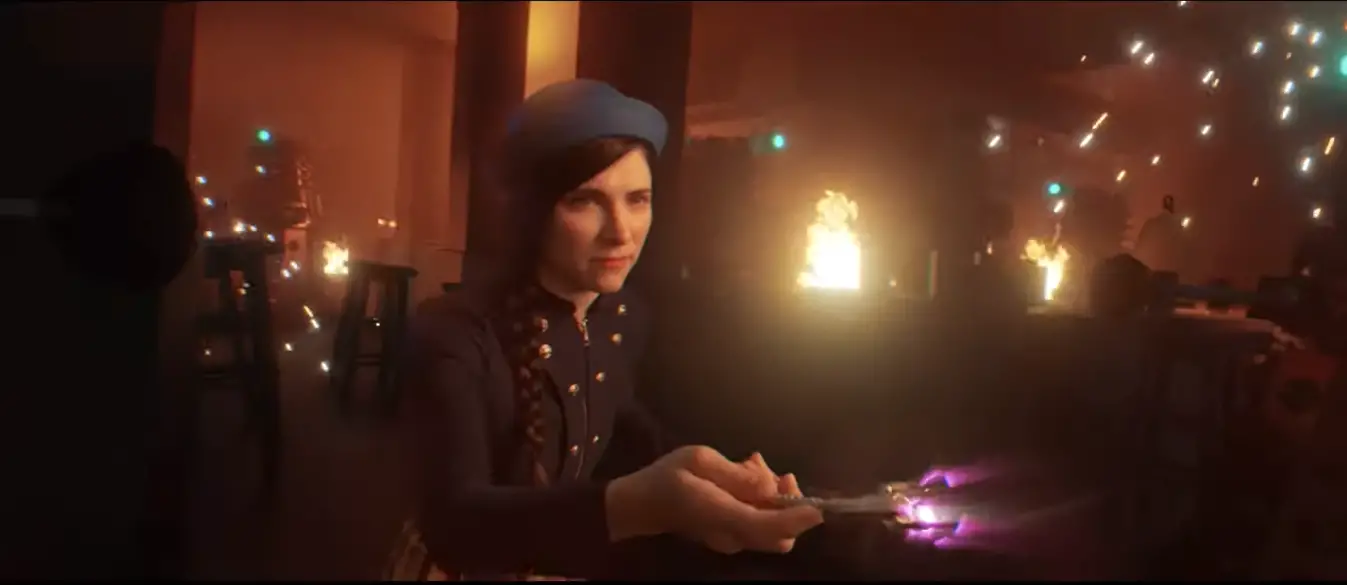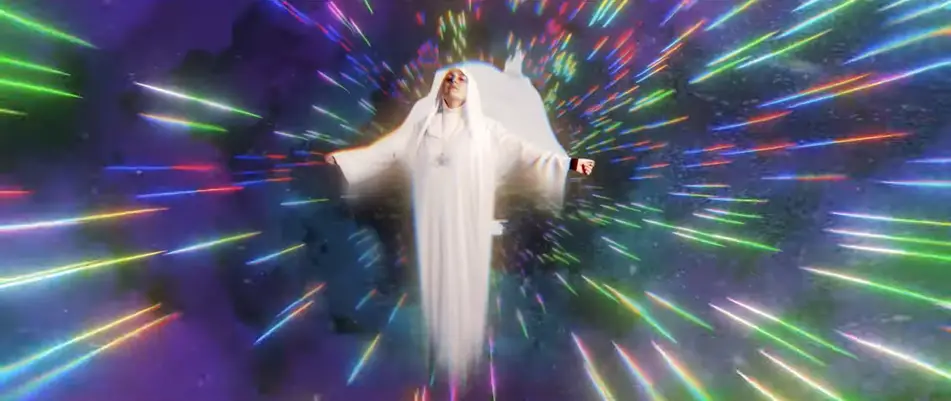
Buried as it is between the mountains and the desert, Boise Idaho doesn’t have much of a film industry. What it does have, secreted among its streets in the often child-cluttered rooms of an unassuming house, is one very strange thing in common with the TARDIS: that, just sometimes, it’s bigger on the inside. Doctor Who Velocity is the brainchild of Chris Phillips and Krystal Moore, a fan series exploring the limits of special effects, short form narrative, and an ever lengthening list of new challenges to overcome.

From its writing to its themes to the impetus for its own existence, Doctor Who Velocity is a show about overcoming limitations. Its episodes are short format (usually 15-17 minutes) stories with limited continuity. Each episode brings something new to the table, both narratively and technologically. Everything is new and experimental, pairing high concept science fiction with a proving ground of special effects techniques. Krystal and I lamented that her first script’s heady presentation of history’s unkind response to a female Doctor could have easily supported a 90 minute story, but the 13 minutes it had were all it needed to leave an impact. Its virtual sets were impressive, converting the pair’s living room into a Tardis or archaic courtroom at will, but never for very long. Doctor Who Velocity’s boundless potential for storytelling sticks true to the series’ roots, but is made possible only by the extreme focus each episode brings with it. The team knows exactly what they need to say and portray in the show’s runtime, consistently pushing the boundaries of its settings and limitations. How do the Weeping Angels interact with the internet? What havoc can the Doctor wreak by taking the wrong person out of time at the wrong moment? How do you schedule a film shoot around two children who live in the studio? Doctor Who Velocity is out to answer these questions, one way or another.
Chris is the kind of guy whose artwork you have almost certainly seen, but without knowing whose hand it was behind the process. He has worked for large studios on a range of promotional materials, covering incarnations of the Ninja Turtles, Garfield, and Warhammer properties. His time on Velocity is a proving ground for new ideas, letting him test the limits of new tools or skills to sometimes incorporate them into his work. This is what allows the team to go anywhere at any time, a concept that pairs well to Doctor Who. The idea first came to make a project that would not be bounded by space and time, hence the entry of our errant Timelord. Velocity allows for experimentation with virtual sets and graphics that leaves the viewer awash in colorful new environments and visuals. The second most recent episode, The Silence, features actors shot on a greenscreen, allowing them to be inserted directly into modeled 3d sets. This gives the camera a dreamlike yet kinetic energy. From Tron to Boglins to a surprisingly somber meditation on art’s struggle against religious hegemony, there’s always something novel to ponder after each episode of Velocity.
Krystal Moore is no stranger to adaptive work conditions. A professional standup comedian, she was put in a bind by the pandemic. Most venues for comedy closed, leaving comedians with nowhere to work. Inside, at least. Taking her show to the streets, Krystal kept up a streak of outdoor shows that made for her most consistent year of performing to date. It’s that quality of uncontainable enthusiasm for the craft that makes fan film a rewarding field to follow. It comes through in the show, which manages to hold to a strong humanistic vision, wherever the Doctor’s travels take her.
Doctor Who Velocity’s eight episodes are available for free on Youtube, and newly released below is the show’s most recent behind the scenes video. These insights into the creative process help hammer home just how impressive this show is, and how sophisticated some of its generative techniques are, but also how democratized the process of filmmaking has become. With nought but the right computer, a large greenscreen and, granted, years of experience in the field of special effects, Doctor Who Velocity is able to produce work that is clean, aesthetically unique, and narratively profound. Locations are expensive and complicated to schedule, forcing fan films to shoot guerilla style or limit their shoots to public locations. Even 3D sets or in-universe camerawork has been seen in the professional field before, but always feeling more flat or artificial than The Silence ever did. The ability to import premodeled sets and place actors within them could be a game changer for low budget filmmaking. It’s certainly added an unmistakable new atmosphere to Doctor Who Velocity.
I would be remiss in not mentioning how deeply this show has mined Boise Idaho of its talent. Mat Gillikin’s vibrant body armor pieces gave the Tron episode weight and identity. Monica Aguilar’s knowledge of Mexican poetry gave The Silence its premise, but her acting brought the struggles of Juana Ines de la Cruz to life. It takes a careful hand to match outlandish visuals with historical pathos, but Doctor Who Velocity manages to thread the needle, with a fever dream energy that leaves a singular impression.
There is no telling how long this project will go on for. The next stage will try to make the best of a tragedy. When Dylan Wood, one of the show’s actors, was injured in a car accident, he lost the use of most of his body. Dylan was eager to continue using his acting talents, despite the mobility challenges. This presents a new question for the team: with the technology at their disposal, what are the limits of an actor with limited mobility? When we talked, Chris was abuzz with ideas, and I can’t wait to see where this phase takes the team.
Doctor Who Velocity doesn’t have a settled schedule, but for now its future is bright. The team’s Facebook page is a good resource for live events, and you can check out Krystal’s site if you want a taste of her comedy. Whether it’s in the TARDIS or the Seventh Dimension or Boise Idaho, I’m happy these two are helping us see that there’s magic everywhere.
Click For More Articles in the Fandom Underground series
